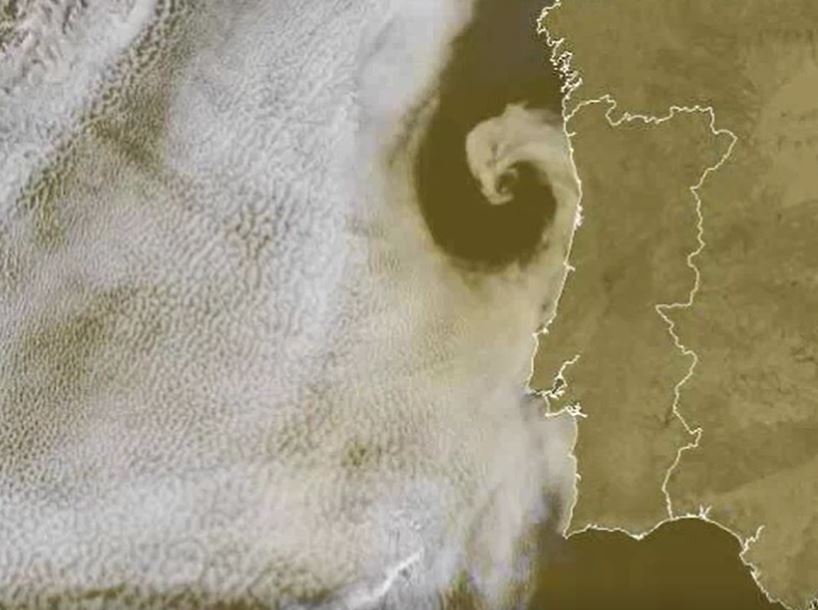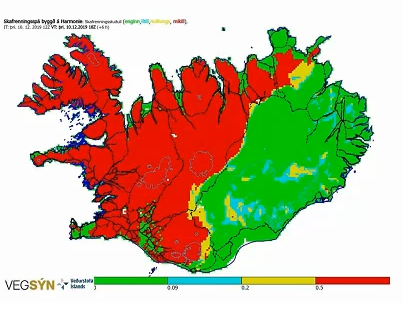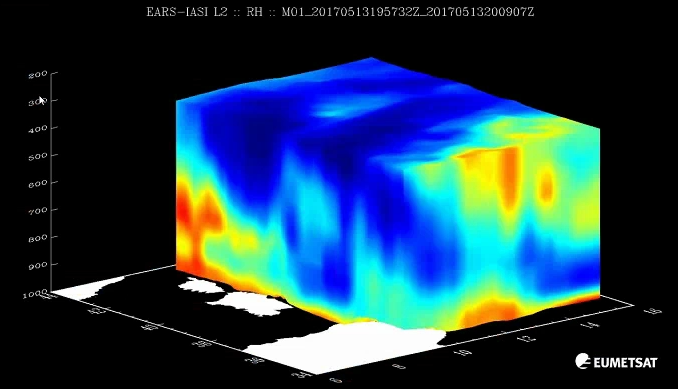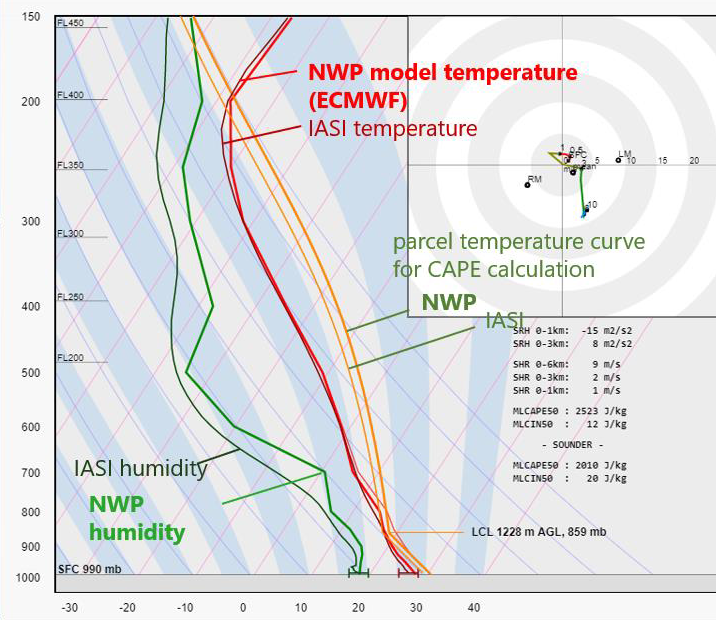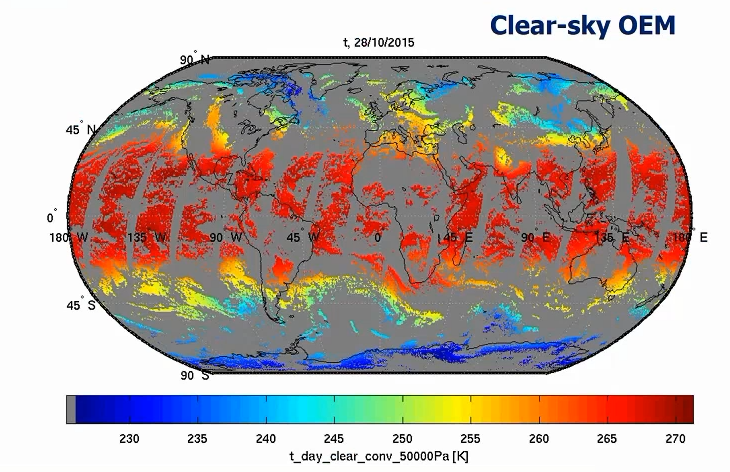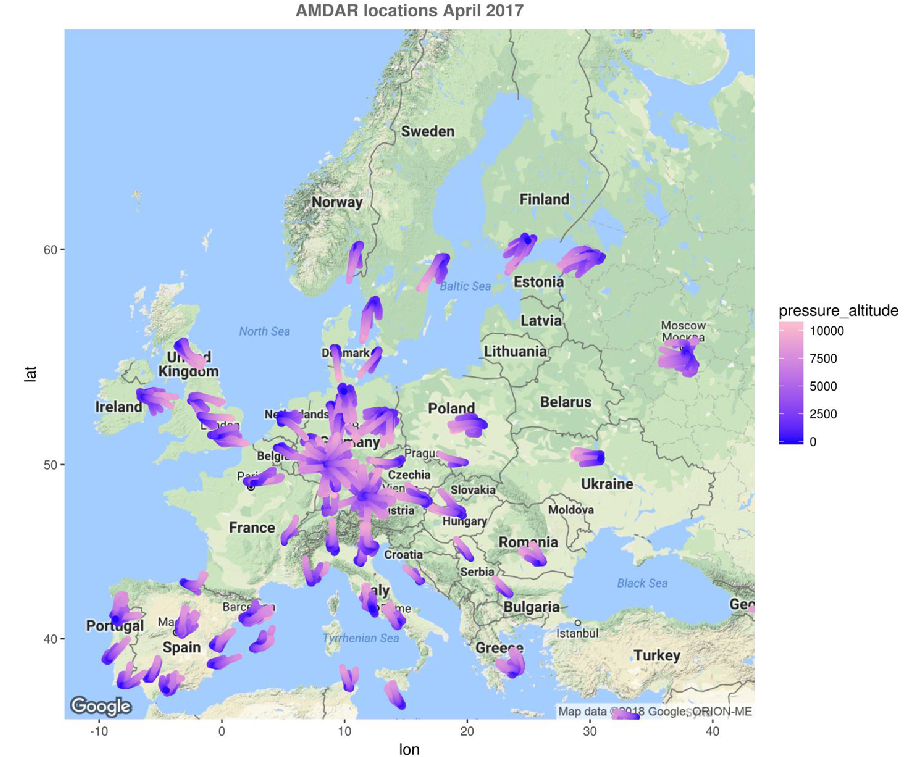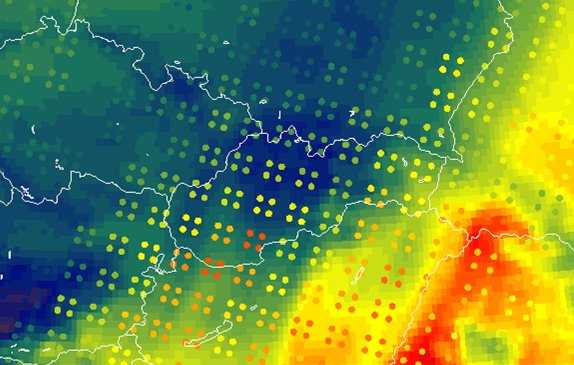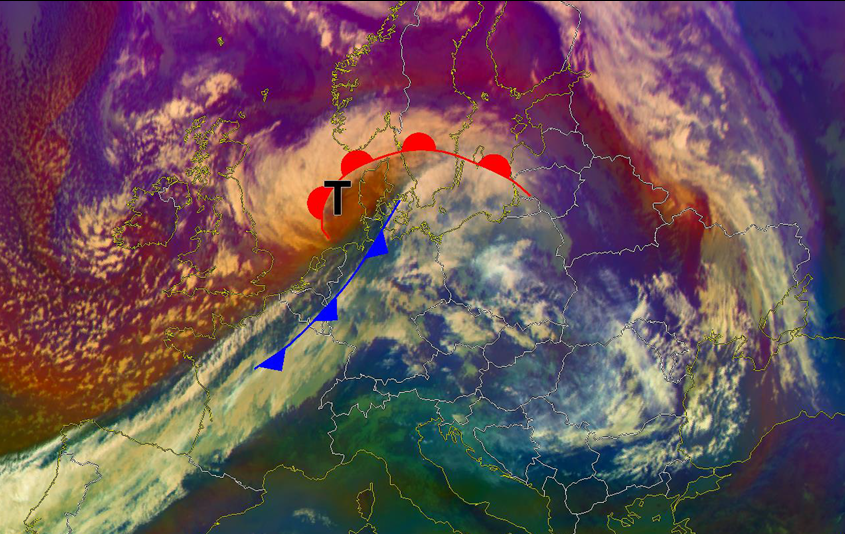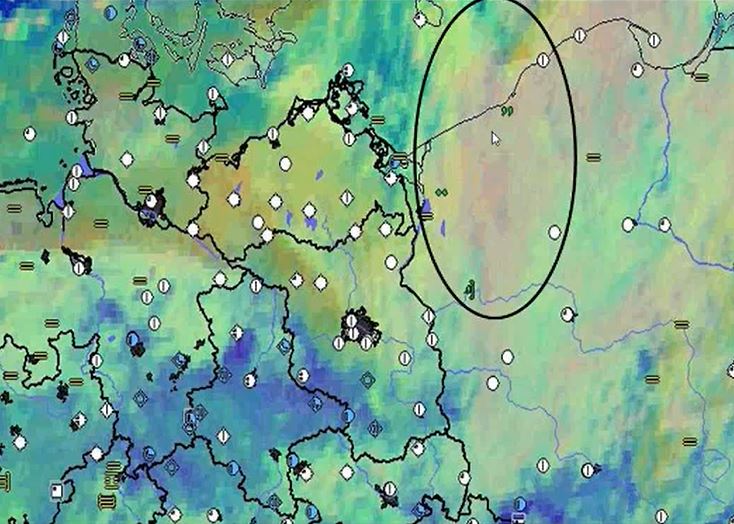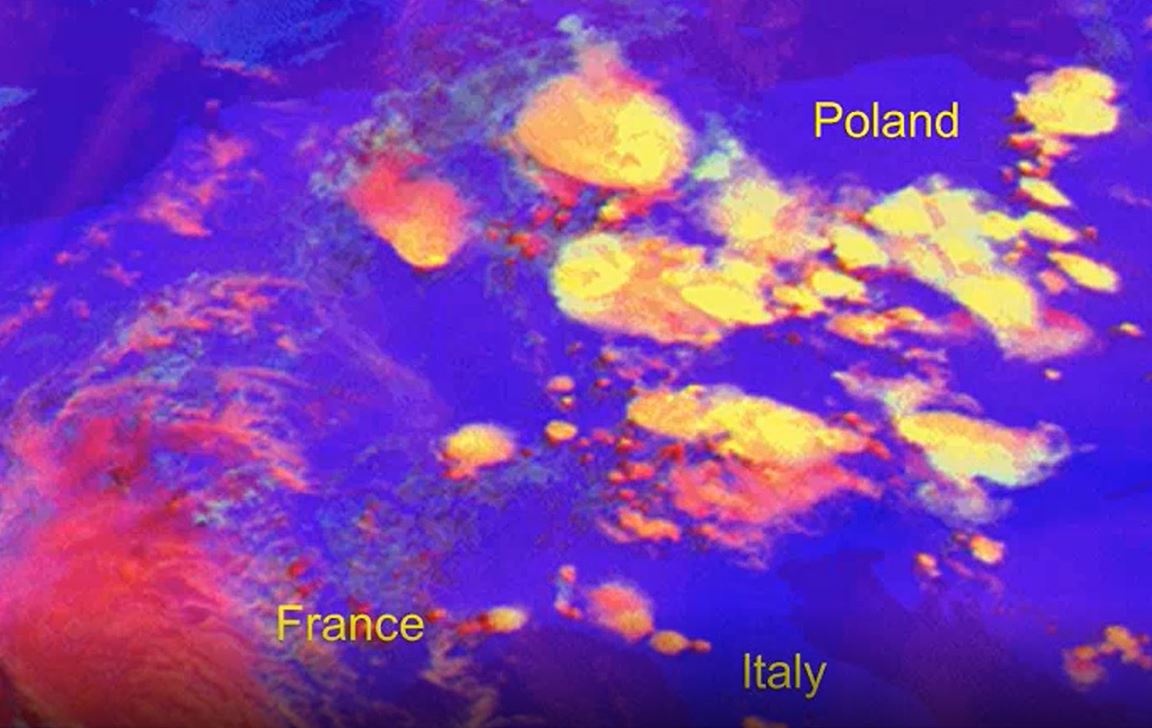Weather
Ad Stoffelen focuses on scatterometer winds, how good they are and what aspects need attention.
Length: 60 min
Author: Ad Stoffelen (KNMI)
Winds over sea are essential for marine forecasting and used in nowcasting and numerical weather prediction (NWP) to aid in off-shore activities (energy sector, transport, fisheries and recreation), particularly to secure safety of life and property. Winds over sea are observed by satellites and available from NWP model forecasts. Most satellite winds over sea are provided by scatterometers; they provide swath fields of both wind speed and wind direction from polar satellites. Currently, winds from EUMETSAT’s MetOp-A, MetOpB and the Indian ScatSat-1 are operationally available and provide good coverage around 9:00 and 21:00 local solar time (LST). Very soon they will be complemented by a few more. The lecture focuses on what scatterometer winds really represent, how good they are and what aspects need attention when applying these winds in your routine operations alongside with NWP model winds.
Hans Peter Roesli discusses various satellite pattern observed over the seas.
Length: 40 min
Author: Hans Peter Roesli, Switzerland
Sea and coastal areas have radiative characteristics that enhance the identification of non-meteorological features like smoke, ash or dust. Maritime inversions and atmospheric interchanges along coastal areas engender particular cloud patterns like Bénard cells, Kármán vortex streets, undular bores, ship trails, (extra) tropical cyclones or sea breeze fronts. Examples of such features will be shown and discussed, using imagery from geostationary and polar weather satellites.
Elin Björk Jónasdóttir introduces the use of high resolution limited area models, SOT and EFI products and specific risk products such as snow drift models.
Length: 35 minutes.
Winter weather in Iceland is severe on any scale. Strong winds, deep synoptic cyclones, blizzards and avalanche risk are conditions that happen every year. The island of Iceland is mountainous and to from one part of the country to another travellers have to cross at least one, and often several mountain passages or drive on roads where steep and high mountains and complex terrain control the winds.
The Icelandic Meteorological Office (IMO) does not do specific road weather forecasts but regular forecasts for all parts of Iceland as well as impact based warnings, where societal impact, including impact on traffic is a part of the evaluation process. In this session I will introduce the use of high resolution limited area models, SOT and EFI products and specific risk products such as snow drift models based on the Harmonie Arome model.
The operational GMS system, which gives forecasts every hour, and is available through a web platform for the regional traffic agencies in Flanders and Wallonia is presented.
Length: 42 minutes.
Forecasting the conditions of roads and highways is important for traffic safety and road maintenance (salting, clearing snow) decision making in Belgium. The Royal Meteorological Institute of Belgium (RMI) collaborated with the Royal Netherlands Meteorological Institute (KNMI) to adapt the KNMI road weather model for Belgian roads. It is based on a 1D radiative transfer model that makes use of meteorological input from different numerical weather prediction models and the INCA-BE nowcasting model used by the RMI weather office. The output (road surface temperature and condition) is generated for about 90 road weather station locations in Flanders and 50 in Wallonia, and is visualized through a GIS interface. We present our operational "GMS system", which gives forecasts every hour, and is available through a web platform for the regional traffic agencies in Flanders and Wallonia. After that, we give a brief introduction to the SARWS project, which RMI participates in with other Belgian partners. Crowd-sourced data is increasingly used in weather science, and road forecasting is no exception. One of the aims of the SARWS project is measuring several weather parameters in real-time from vehicle sensors, in order to enhance the RMI road weather forecasts performed, and eventually send warnings to drivers in case of dangerous conditions. In the presentation, we will highlight the first results of a field test performed by three cars in the region of Antwerp.
Thomas August gives an introduction to EUMETSATs current (IASI) and future (IASI-NG and MTG-S) hyperspectral sounders.
Length: 46 minutes.
Assessing and monitoring atmospheric thermodynamic parameters is key for weather forecasting. Space-borne hyperspectral sounders provide vertically resolved information of atmospheric temperature and humidity, and of surface and cloud properties. The future geostationary infrared sounder IRS on board Meteosat Third Generation (MTG) will deliver operational atmospheric sounding at unprecedented temporal and spatial sampling, with 4-km pixels at Nadir and covering Europe every 30 minutes. It will hence be an important complement to satellite imagery (e.g. operational MSG/SEVIRI or the future MTG/FCI instruments), where long experience exist in support to nowcasting, by allowing the detection and monitoring of atmospheric instabilities before convective clouds develop.
In this presentation, we give an introduction to EUMETSAT current (IASI) and future (IASI-NG and MTG-IRS) hyperspectral sounders, the remote-sensing principles and geophysical information contained in the so-called Level 2 (L2) products. This includes temperature and humidity profiles, cloud and surface properties and indirect parameters relating to the atmospheric stability. We give an overview of recent application studies and experiments using IASI L2 products in support to weather forecasting.
Pieter Groenemeijer reports of the tests ESSL has undertaken to check the usability of ISAI L2 temperature and humidity profiles in storm forecasting.
Length: 44 minutes.
ESSL studied the use of retrieved temperature and humidity profiles available from the Infrared Atmospheric Sounding Interferometer (IASI) instrument on the polar-orbiting Metop satellites for storm forecasting during the 2019 Testbed and for a number of cases. Parameters relevant to convective storm prediction such as CAPE, CIN and humidity at various levels were computed and a direct visual comparison between the satellite-derived and NWP-modelled profiles was made possible. We present the main conclusions of this study, addressing the usability of the products, preferred derived parameters and observed limitations.
Thomas August provides an overview of the performances of the operational hyperspectral sounding products.
Length: 34 minutes.
In this presentation, we provide an overview of the performances of the operational hyperspectral sounding products. They have been evaluated against independent reference measurements in dedicated validation studies and are continuously assessed in the routine monitoring. We introduce also the quality indicators (uncertainty estimates) provided along with the atmospheric profiles to support quality control and data acceptance on user side, accordingly to their applications.
Jana Campa compares IASI L2 and AMDAR profiles and provides an estimation on usability of CAPE derived from IASI L2 profiles.
Length: 33 minutes.
The knowledge of the vertical structure of the atmosphere is extremely important for a reliable weather forecast, especially in the case of severe convection. The arrival of the new infrared sounder with the MTG will open many new possibilities in assessing the atmospheric instability. However, satellite retrievals lack accuracy towards the lower levels, which are crucial fort the calculation of several stability indices.
In the first part of the talk, a comparison of stability indices calculated from IASI L2 and AMDAR aircraft profiles will be presented. The probability of detection can be relatively high with adapted thresholds, but unfortunately also false alarm ratios are relatively high. In the second part, the uncertainty of CAPE resulting from errors in the retrieved profiles will be estimated.
Zsofia Kocsis presents an investigation of blended IASI and Synop measurements in a convective environment.
Length: 44 minutes.
Using IASI L2 profiles, different instability indices (e.g. Lifted Index, CAPE) and water vapour content in different layers can be determined, which provides information on the convective environment. These indices were studied in several convective cases which led us to try to merge the IASI profiles and Synop measurements. In this presentation we present the reasons why we choose to combine these different measurements and we also present some of our experiences with the blended IASI product.
Christian Herold presents case studies in order to give an answer if IASI profiles help predicting sting jets.
Length: 37 minutes.
Strong winds southwest of the centre of a Shapiro-Keyser-Cyclone are often associated with a cold conveyor jet or a sting jet. The sting jet is a strong mesoscale flow with a very high damage potential. It is a huge challenge for NWP and forecasters to predict correctly a sting jet. The question is: Can IASI profiles help us for a better prediction of such mesoscale severe wind events connected with sting jets? Therefore, some case studies will be presented.
Synoptic and Mesoscale Analysis of Satellite Images 2018 Course
Length: 59 min
Author: Wilfried Jacobs (DWD)
Satellite image interpretation of shallow clouds and related weather phenomena is a very important task for nowcasting because NWP-models and statistical methods exhibit still deficiencies in simulating these phenomena in a proper way. Especially over oceans but also over land observation networks are often too coarse meshed for nowcasting.
The theory and the most suitable satellite products will be explained first. In combination with other data (e.g., observations, radio soundings, radar products) examples will be discussed for the following application areas:
- Diagnosing shallow clouds in respect to water content and related weather, e.g., drizzle of different intensities;
- Identifying fog and low stratus and how to estimate the fog/stratus layer’s thickness. The likelihood of dissolving and connected weather phenomena (e.g., freezing drizzle) will be covered, too.
Synoptic and Mesoscale Analysis of Satellite Images 2018 Course
Length: 50 min
Author: Frans Debie (KNMI)
Convection can be found everywhere on the planet. However in meteorological way of thinking in mid-latitudes there is convection in different airmasses and also at the boundary of these airmasses. Convection at the boundaries belongs to the sub-features of frontal systems and we won’t deal with convection in the frontal systems.
In this lecture a few examples of unstable air Conceptual models will be shown, for instance: Cumulonimbi, Enhancement of convection by PV, Spanish Plume, etc. The typical environment is one part and the organization modes is the second part of the lecture.


